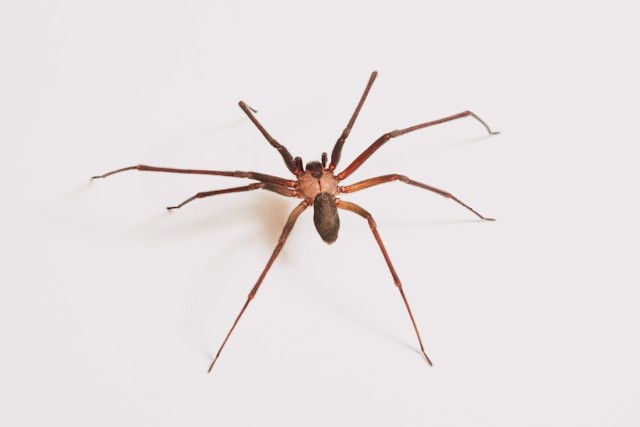The most prevalent and widely distributed brown spider, the brown recluse spider (Loxosceles reclusa), is mainly found in the South and Central regions of the United States.
Habitat Location of Brown recluse spiders

(Photo : Timothy Dykes/ via Unsplash)
The natural habitat of brown recluse spiders includes portions of Georgia, Tennessee, Kentucky, Ohio, Indiana, Illinois, Iowa, and Nebraska as well as Kansas, Oklahoma, Texas, Louisiana, Arkansas, Missouri, Mississippi, and Alabama.
It is quite improbable that you will come into contact with a recluse spider if you do not reside in these regions. They are restricted to particular geographical areas in their distribution.
Appearance of Brown Recluse Spider
The violin-shaped patterns on the cephalothorax of the brown recluse spider, which belongs to the Loxosceles genus, make it easy to identify.
Known as fiddleback or violin forms, these characteristic markings change in strength with the age of the spider.
When a spider reaches adulthood, its neck usually points toward its bulbous belly or back, resembling a dark brown violin.
The brown recluse spider's distinctive feature is essential for setting it apart from other species in the Loxosceles genus.
Accurately recognizing this potentially hazardous arachnid depends on the presence of these violin-shaped markings.
Behavior and Mating
Brown recluse spiders are nocturnal creatures that spend the day looking for warm, dark, and protected spaces.
The secretive behavior of the brown recluse gives rise to its moniker. They sleep during the day in obscure spots in isolated, dark places. They roam about at night looking for food.
Sometimes during the day, they can be spotted straying from their retreat and crawling on walls, floors, and other exposed surfaces.
Usually, starvation, the use of pesticides, crowding, or disturbances cause this behavior. Live and dead insects are consumed by brown recluse spiders. They can survive for up to two years and have amazing survival skills.
They can go up to 12 months without food or water. Brown recluse spiders do not weave webs to capture prey, in contrast to most other web weavers. Rather, they construct erratic, flat webs called retreats out of haphazard silk strands.
They are renowned for being non-aggressive and usually stay away from people. Despite the possibility of necrotic skin lesions from their bites, it's vital to remember that 90% of bites do not cause serious medical problems.
Less severe bites can heal well with appropriate wound care and the use of the RICE regimen (rest, ice, compression, and elevation).
Treating bites from brown recluse spiders requires caution and, if necessary, medical attention.
Also Read: King Baboon Spider: This Tarantula's Immensely Painful Venom May Help Us Understand Chronic Pain
How Venomous Is This Spider?
Among the Loxosceles genus, brown recluse spiders are usually found in the central and southern parts of the United States. Although they can bite very hard, fatalities are uncommon.
If you are bitten, you should get medical help right once, especially if the bite is severe. When dealing with these spiders, exercise caution because their venom can result in necrotic sores and other dangerous symptoms.
Do not wait to get professional medical attention if you think you may have been bitten by a brown recluse spider. This will guarantee that you receive the right care and avoid any potential consequences.
Related article: Genetically Modified Silkworms Produce Spider Silk for the First Time As Alternative to Synthetic Fibers
© 2024 NatureWorldNews.com All rights reserved. Do not reproduce without permission.





